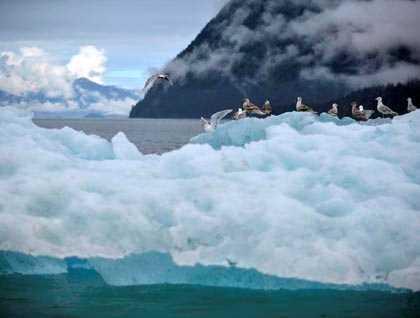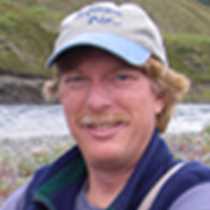A soft rain welcomed the first round of boat rides into LeConte Bay as we got up-close and personal with the icebergs of the LeConte Glacier, the southern-most tidewater glacier in North America. The glacier was named in 1887 in honor of University of California geology professor Joseph LeConte, a contemporary of John Muir, by U.S. Navy Lt. Commander Charles Thomas while he was mapping these waters in the 1880s. The low clouds and grey skies made for tantalizingly blue ice and the ice made a perfect landing pad for glaucous-winged gulls. That whole weather pattern shifted by the second boat ride as blue sky and sunshine crept into the morning and provided photographers with stunning ice reflections off flat, calm waters.
Just as we left LeConte Bay, a DeHavilland Beaver on floats took off with six of our fellow explorers for an aerial view of the glacier and surrounding Tongass National Forest. The day had evolved into a perfect day for flying. It was also a perfect day for exploring Petersburg and we had lots of options. For the independent explorer, bicycles were available for riding through town and out the road to see the surrounding Tongass Forest. Guided walks were taken to Petersburg Creek to explore a muskeg, which makes up about 10% of the total Tongass land mass. Other guided walks included a photographic walk through the city and a walk along the docks to explore the commercial fishing boats that make Petersburg one of the most productive fishing towns in Alaska.
During wrap-up, Petersburg resident Becky Knight helped us understand the differences between the different commercial salmon fishing gear types. The biggest boats with the largest crews are the purse seiners; power trollers fish offshore in the open ocean for king and coho salmon – hooking them one at time to provide high quality fresh fish for markets all across America; and gillnetters, with their ability to catch large quantities of red salmon and deliver them to the canneries that line the Petersburg waterfront.
It looked like all-you-can-eat crab and a teaser from Taylor for the trip’s video would end another nearly perfect day on National Geographic Sea Lion, but as the sun was setting our day ended with humpback whales waving their pectoral fins and flashing their flukes in a symphony of activity as we headed north for Tracy Arm.







